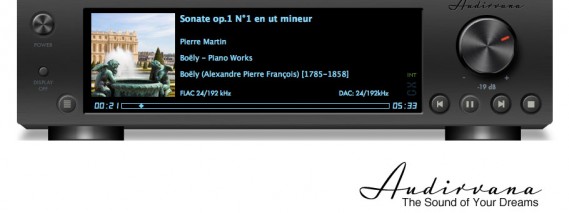

Instrument layering is also better with Audirvana+. To me, the tonal balance is not as natural as Audirvana+, but the sound is very clean with Pure Music where Audirvana+ tends to be a little grainy. It integrates with Itunes beautifully, and the way Pure Music lets you add FLAC files into the Itunes’ playlist window is a very nice feature to have. Overall, I think it’s a very mature player in terms of the features, controls offered and the stability of the program. But in terms of features, Pure Music is the most feature-loaded player of all the players reviewed in this article. In comparison to the Audirvana+ and the Fidelia, however, the arrangement of the preferences panel and the graphic user interface of the Pure Music player looks a lot like a freeware application, so this is an area that needs a lot of improvement from Channel D, especially considering that the $129 price tag is far higher than Fidelia’s $19 base price tag. In comparison to the “High Fidelity” upsampling, the “NOS” upsampling gives a darker and thicker sound which may work better in some systems. One setting that stands out however is an upsampling preset labelled as a NOS Upsampling method (Preferences > Music Server Settings > Advanced > Upsampling Method > NOS Type “Classic” Upsampling”. I was a little surprised to find that Pure Music doesn’t use Benchmark’s iZotope resampling engine, as iZotope seems to be the standard high-quality engine used in most of the players here. Memory Play (for A-B comparison purposes).High quality audio streaming to a remote computer.Graphic Meter Display that’s capable of Dynamic Range Metering.Play FLAC files with Itunes without an additional add-on.Upsampling: NOS Classic Type Upsampling.Left/Right Balance Control, the only player to offer balance control.Volume Control Settings: Precise volume control (including volume boost and volume reduction) with numbered spots.Some of the features unique to Pure Music includes: Overall you get a lot of control over how you want the parameters to be, and even if they are not presented in the most elegant manner, again I appreciate the fact rich features of Pure Music. Even in some aspects, the fact that Pure Music includes things like precise stops on the volume control and dedicated buttons on the player window for invert, dim, mute, memory play, upsample, and even reset are in fact very nice.
#PURE MUSIC VS AMARRA FULL#
While I’m not a big fan of the cluttered GUI, I do appreciate the fact that the controls offered are more full featured than many of the other players. The graphical user interface (GUI) of Pure Music is extremely messy, especially when you turn on the meter displays. Loaded with great features, but the cluttered user interface and preferences panel makes Pure Music a relatively complicated player to learn.

And if you do compare the functions of two players on the comparison table, Pure Music does look to be the better buy. The selling point that matters the most for me is the $129 price tag which looks like a great bargain compared to the Amarra.

On their website you can see that they went head-to-head to Sonic Studio with a comparison list to the $659 Amarra player (despite the list not specifically mentioning Amarra). Together with Audirvana+, Pure Music perhaps is the closest competitor to the Sonic Studio players in terms of sound quality.


 0 kommentar(er)
0 kommentar(er)
